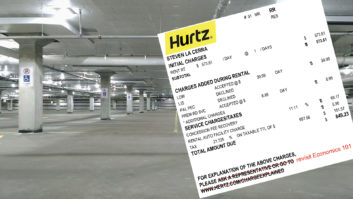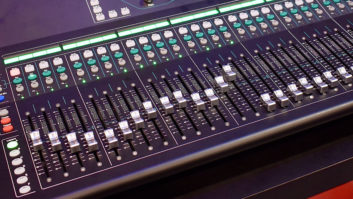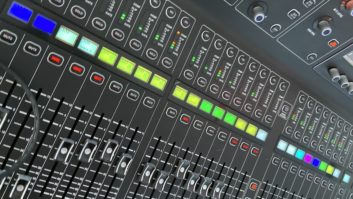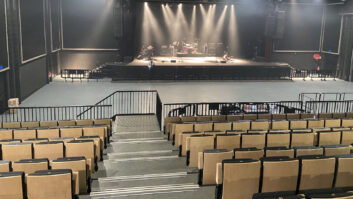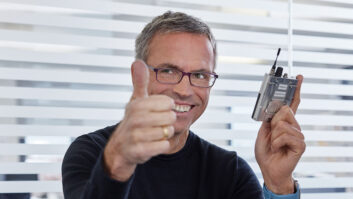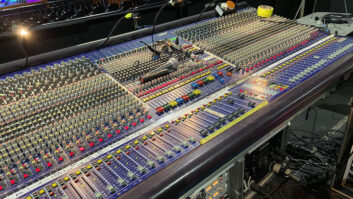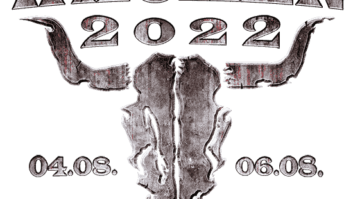On April 17, 2019, one of my classes had the opportunity to participate in a very special event. Held in the Rotunda, Mercy Hall at the Dobbs Ferry, N.Y., campus of Mercy College, the event was Formation, Transformation and Deformation, An Ambient Electronic Music Performance, featuring special guests Steve H, sym.bi.otism and Tundra Ghosts. The event was organized by Stephen B. Ward, Associate Professor of Music Production & Recording Arts at Mercy College. When Professor Ward asked if the students in my Sound Reinforcement class would be able to provide and run a sound system for the event, the answer was a definitive yes!
Having become familiar with the acoustic environment that is the Rotunda from several prior encounters (uh-oh), I informed the class that there was good news and bad news. The bad news was that the Rotunda—a large (6,500 square feet), empty space with a high ceiling, brick walls and a thinly carpeted floor—is incredibly reflective and can be very difficult to deal with when it comes to achieving intelligibility. The good news was that the concert was to be held in quad, with performers and the audience situated in the center of the room. The P.A. system would be set up in a perimeter around the performers and the audience.
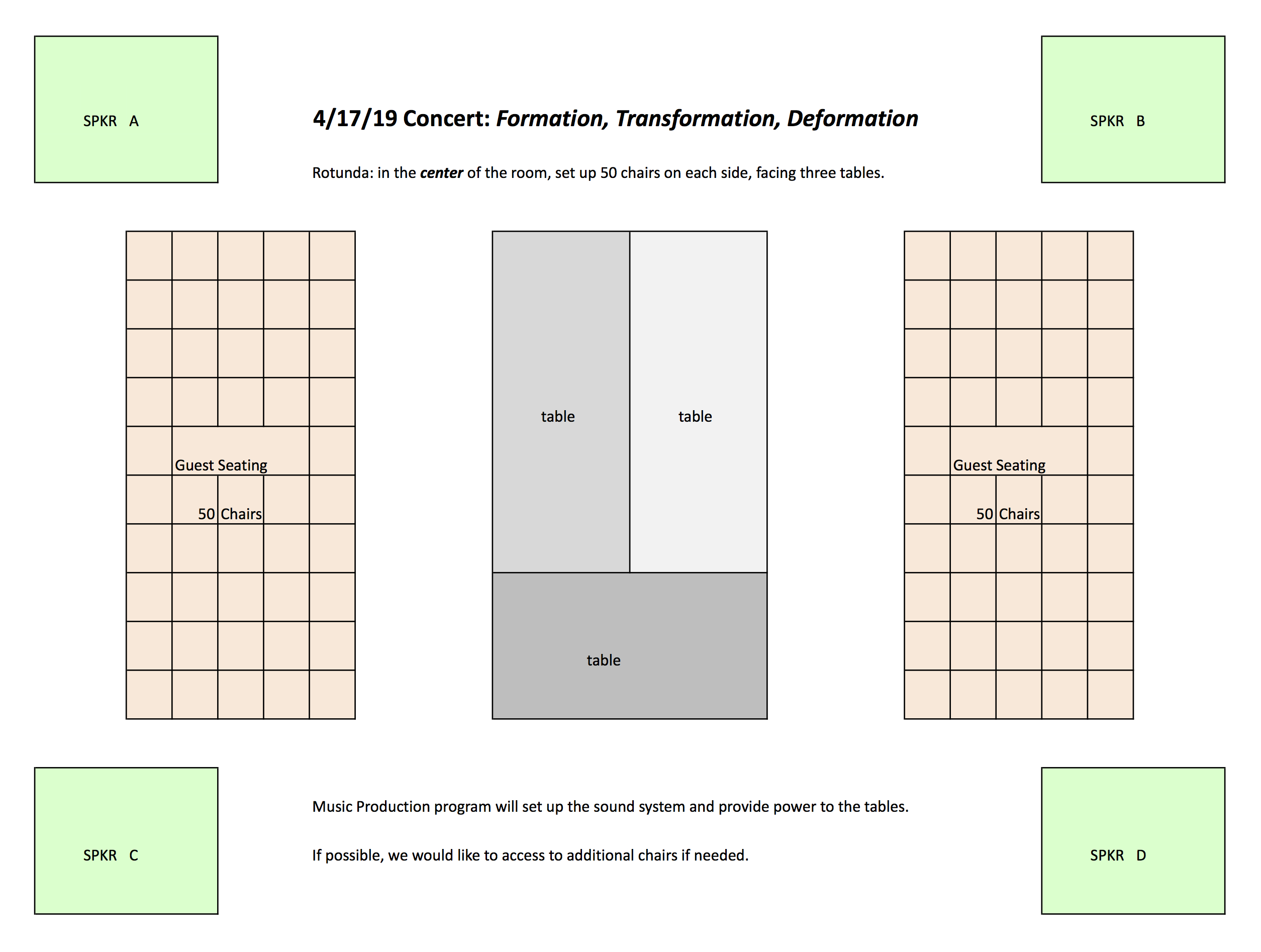
At a class discussion the prior week, the heart rates of my students spiked when they heard the word “quad” because some of them know what quad is and fear it, and some of them feared it because they weren’t familiar with the idea. “Rest assured, I will not throw you to the wolves…just yet,” I told them in an effort to assuage their panic. In the meantime, myself and Mercy College Music Studio Manager Sam Stauff formulated a simple plan for configuring the P.A. that would ensure student success.
On the day of show, we set several large work tables in the center of the room creating a four-position “workstation” of sorts. At one end was the mixing console, a Behringer X32. At the opposite end from this “mix position” was Professor Ward, the creative force behind Tundra Ghosts. To Ward’s right was Francis Manzella, who created the electronic music project sym.bi.otism in 2016. Seated to Ward’s left was noted electronic musician Steve H, whose immersive, surround performances have entranced audiences from New York to Berlin. Each performer would do a solo set, followed by a jam session featuring all three. The “trick” was that each performer needed to hear a pair of speakers that would serve as his “front” left and right speakers.
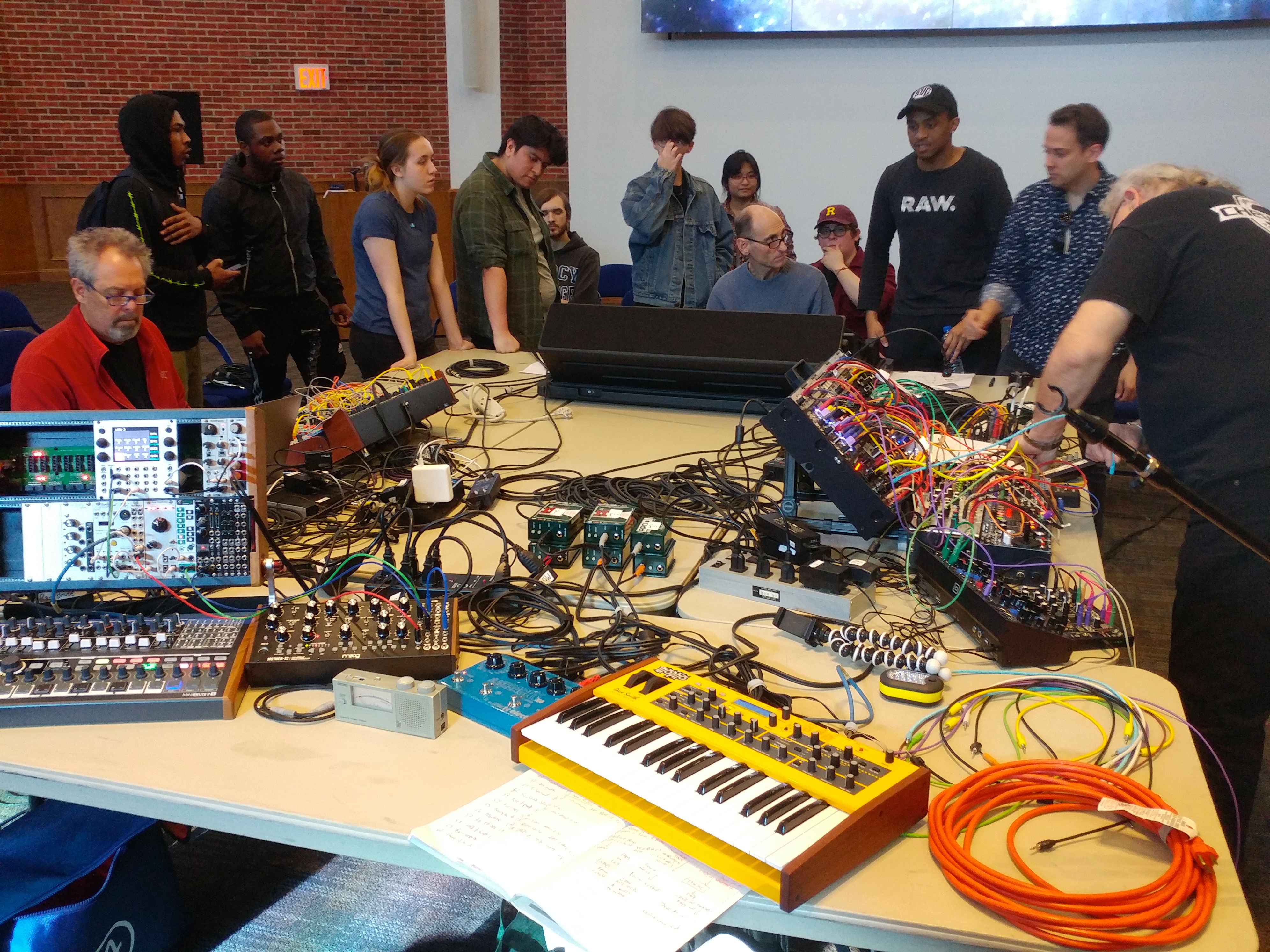
Sam came up with the idea of designating each of the four speakers with a letter, and assigning a specific pair to each performer as their front left and right. For example, Ward’s front left and right were speakers A and B, while Steve H’s front left and right were speakers B and D. Manzella’s front left and right were C and A. Got that? The students deployed the speakers (QSC K10s) in each position and patched four separate outputs from the X32, one to each speaker.
Each performer fed multiple outputs from their respective electronic rigs, and the students patched these through DIs to input channels on the X32. To avoid confusion and save the sanity of the students (as well as my own), we did not use the X32’s Main L/R output buses; instead, the outputs were simply designated A, B, C and D and routed to the respective speakers. This also provided the students with an opportunity to learn and practice routing and naming channels on the X32.
At soundcheck each performer sent test signals to hs own front left, front right, rear left and rear right outputs. The students dialed up gain and assigned these channels to the appropriate output buses—freeing them of the need to worry when and where to pan specific sounds because the performers would be handling that aspect. This took a bit of time to sort so that they could make sure each performer’s perspective was properly configured. The audience would be encouraged to move their seats during the show so that they could experience it from different listening positions (which some of them did).
The final issue to address was that of reverb, and the decision was made that the Rotunda produced enough reverb naturally so that we wouldn’t need to add anything artificial.
Finally, this tough acoustic environment was going to make a positive sonic contribution to an event. Soundcheck was finished well before the 7:00 p.m. show start, so the students had a few minutes to catch their breath. Quite frankly, they nailed it. There was not a single technical issue during the show. It was obvious that the audience and performers enjoyed the evening, and my students had the chance to successfully run tech for a once-in-a-lifetime event.

